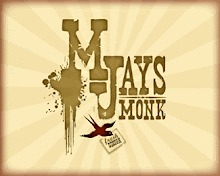0
Step up to the gallows freelancers
Posted by Mj Monk
on
2:57:00 AM
3 Ways to Commit Freelance Suicide
If you’re a freelance designer, then you’re a one-man business, responsible for attaining clients and servicing them to the best of your ability. Because you’re a business, there are certain actions, however, if undertaken that could jeopardize your source of income, and destroy your freelancing career. It’s vital that you keep away from these factors.
1. Do not charge too much
Freelance designers sometimes develop this idea in their head that if they charge ridiculous prices for their work, they can just service a few clients every month, and still earn the same amount. Let me tell you, without the proper connections and image, there’s no chance you’ll be able to charge sky-high prices for your services. The only scenario in which this works is if you’re an extremely established freelancer, with years of experience and an outstanding brand image.
2. Develop adequate skill
Your skill as a designer is your most important asset, so don’t let it dwindle. If you can barely render an acceptable logo or design template you shouldn’t be freelancing until you feel you’re good enough to design to the masses. This means having average work (in comparison to your peers). However, if you want a fruitful freelancing career, it’s best to develop your skills further, until you can render really beautiful work. Not only will you see a much more dramatic influx in clients, but they’ll be much happier and in turn you will be too. Not only that, but the better your work, the more you can charge for it, so good outcomes all round.
3. Don’t take on too many clients
Too many times freelancers make the mistake of biting off more than they can chew. Freelancing is more about the individual client and catering for his/her needs rather than mass producing work for the masses, so take the less amount of work for the larger reward per project. You are not a design firm, keep this in mind, so you can’t accept 100% of the work that comes your way, as this can lead to becoming swamped which isn’t a good thing if you can’t deal with it. It’s extremely difficult to deal with having too much work on your plate, so take it easy, and only accept a few projects at a time (unless you’re superhuman and have elite efficiency and productivity).
Conclusion
Be wary of the points mentioned in this article, and you’ll be well on your way to becoming a successful and prosperous freelancer. Remember that freelancers get work mostly on referrals and recommendations, so aim to make each and every one of your clients as happy as they possibly can be with the work you produce for them.
Posted on 03. Oct, 2009 by Taiyab in Tips and Tricks




